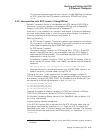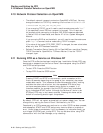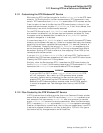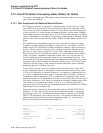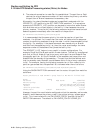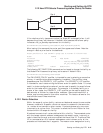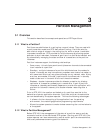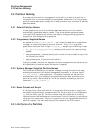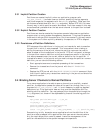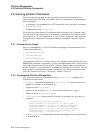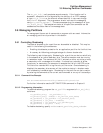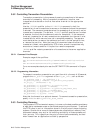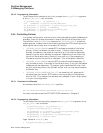
3
Partition Management
3.1 Overview
This section describes the concepts and operations of RTR’s partitions.
3.1.1 What is a Partition?
Partitions are subdivisions of a routing key range of values. They are used with
a partitioned data model and RTR data content routing. Partitions exist for
each distinct range of values in the routing key for which a server is available
to process transactions. RTR provides for failure tolerance by allowing system
operators to start redundant instances of partitions in a distributed network and
by automatically managing the state and flow of transactions to the partition
instances.
Partition instances support the following relationships:
• Concurrency - this attribute permits multiple server channels to be connected
to an instance of a partition.
• Standbys - multiple instances of a partition distributed over the nodes of a
cluster. A standby set may have as many members as a cluster has nodes, or
with some restrictions you may place a standby on any network node. At any
one time, one member of the set is active while the others wait in standby
mode to take over in the event of failure of the active member.
• Shadows - shadow instances provide site disaster protection by allowing
replication of transaction processing at a remote site. A pair of partition
instances or (standby sets thereof) cooperate to provide this replication, with
provision for automatic recovery of a shadow member restarting after a
failure.
Prior to RTR V3.2, the creation and behavior of a partition was tied to the
declaration of server application channels. Partitions and their characteristics
can now be defined by the system operator. This has the following advantages:
• It allows a further de-coupling of the application from its operating
environment, thus reducing application programming requirements.
• Allows the system operators to make choices concerning the runtime behavior
of the system.
3.1.2 What is Partition Management?
Before RTR V3.2, the management of the state of a partition was an entirely
automatic function of the distributed RTR system. Starting with RTR V3.2, the
system operator can issue commands to control certain partition characteristics,
and to set preferences concerning partition behavior.
Partition Management 3–1



